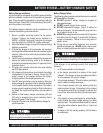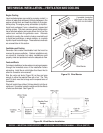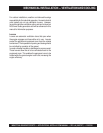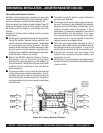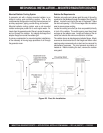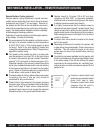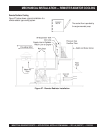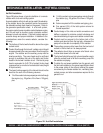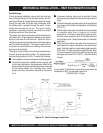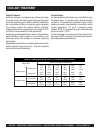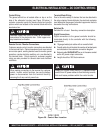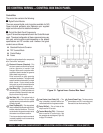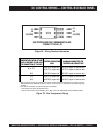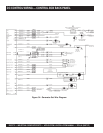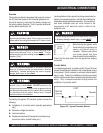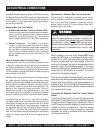
INDUSTRIAL GENERATOR SETS — APPLICATION & INSTALLATION MANUAL — REV. #4 (09/07/07) — PAGE 67
MECHANICAL INSTALLATION — HEAT EXCHANGER COOLING
Heat Exchanger
A heat exchanger installation uses a shell and tube type
heat exchanger instead of the standard radiator and fan
(see Figure 29 below). Engine jacket and coolant circulates
through the shell side of the two heat exchangers while
the cooling water is pumped through the tubes. Engine
coolant and raw water do not mix. This type of cooling
separation is necessary because raw water can contain
scale-forming lime or other impurities.
This system can reduce set enclosure airflow requirements
and noise levels. Proper operation depends on a constant
supply of raw water for heat removal. Adjust the flow to
maintain the proper engine jacket water coolant temperature
and the coolant temperature. The engine coolant side of
the system can be protected from freezing; the raw water
side cannot be protected.
The engine, pump, and liquid-to-liquid heat exchanger form
a closed, pressurized cooling system. The engine coolant
and raw cooling water do not mix. Consider the following:
The installation will require a powered ventilating system.
To obtain the net power available from the genset, add
the fan load indicated on the specification sheet to the
power rating of the set and subtract the power consumed
by the remote radiator fan, ventilating fans, coolant
pumps, and other accessories required for the genset
to run.
Figure 29. Heat Exchanger Installation
If a set rejects 19,200 Btu per minute and the raw water inlet
temperature is 80°F, the raw water required is:
[19,200/(60x8)] = 40 gpm
A pressure reducing valve must be provided if water
source pressure exceeds the heat exchanger pressure
rating.
The heat exchanger and water piping must be protected
from freezing if the ambient temperature can fall below
32°F (0°C).
A thermostatic water valve (nonelectric) is recommended
to modulate water flow in response to coolant
temperature. A normally closed battery powered shut-
off valve is also required to shut off the water when the
set is not being used. (Always leave water on if a standby
application)
There must be sufficient raw water flow to remove the
heat rejected to coolant indicated on the specification
sheet. Note that a gallon of water absorbs approximately
8 BTU each 1°F rise in temperature (specific heat). Also,
it is recommended that the raw water leaving the heat
exchanger not exceed 140°F (60°C). Use the following
formula:



